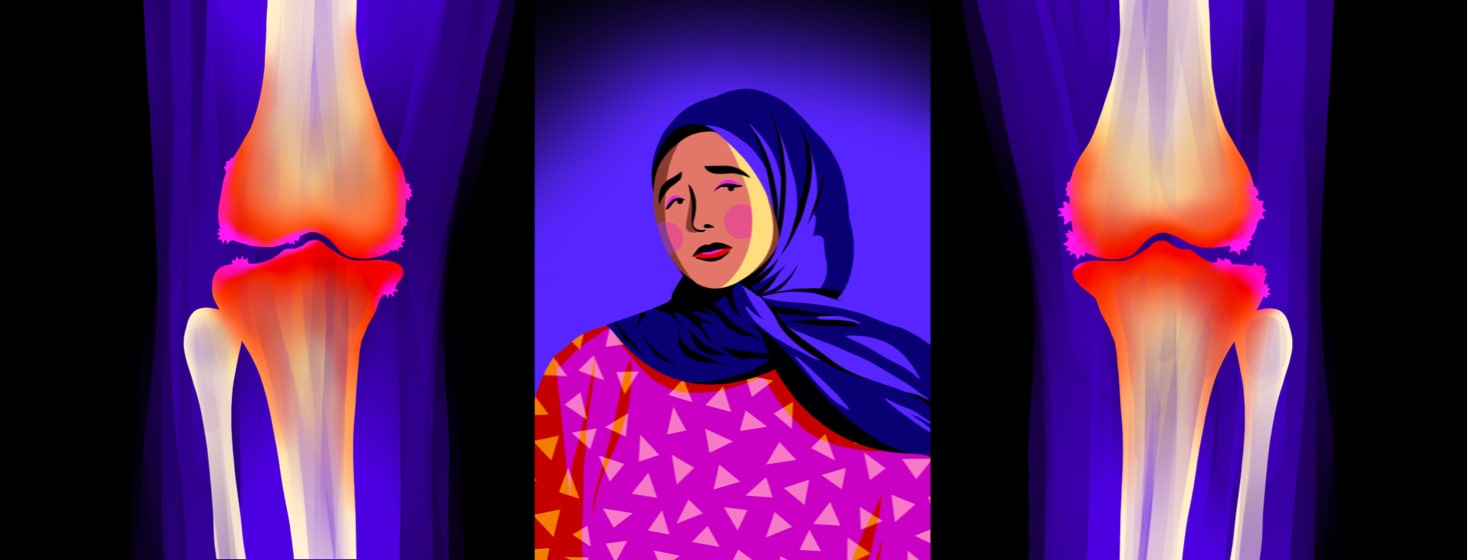When Is It Time For Knee Replacement Surgery? Part 1
"You’re not old enough for surgery," said my first orthopedic doctor 4 years ago, "but you will need total knee replacement at some point in the future."
At that time, I was hobbling around with severe pain in my right knee. Three years prior to that, I was hobbling around from pain in my left knee. Basically, for the past decade, I’ve been on a slow rollercoaster of pain and crunchiness in both knees.
Early attack of mild osteoarthritis
In addition to rheumatoid arthritis (RA), I have osteoarthritis (OA). While the RA primarily affects my hands, feet, and shoulder, OA affects my knees.
My first real problem with OA cropped up when I thought I "tweaked" my left knee. I was painting my home music studio and climbed up and down off a ladder many times. The pain was undeniable. Eventually, I headed to a local urgent care center because I wasn’t sure what had happened but I knew that it HURT!!
I was referred to an orthopedic doctor after urgent care didn’t have much help to offer. The orthopedic doctor took x-rays and listened to my painful complaints. The twisting motion of getting on that lowest step off the ladder likely aggravated the young crop of bone spurs, or osteophytes, that were visible on the back of my kneecap on the x-ray.
My orthopedic doctor gave me a corticosteroid injection in the knee joint and sent me on my way.
It seemed to help at this stage of mild OA. But, that wouldn’t be the last time I visited this doctor with painful knees.
Transition to moderate osteoarthritis
When my OA was mild, steroid injections seemed to help relieve some of the pain. But when the pain had progressed to the point I was sleeping in the recliner every night because sleeping in the bed was too painful, new x-rays revealed that I was growing additional curly bone spurs.
An MRI scan of my left knee also revealed thinning and frayed cartilage in each of the 3 compartments of the knee joint.
My doctor now called my OA moderate and suggested that injections of hyaluronic acid might help relieve some of the pain. He also suggested lifestyle changes such as weight loss to help reduce mechanical stress on the knee joints.
Positive results with OrthoVisc injections
So we tried a round of OrthoVisc injections in 1 knee and the result was great. OrthoVisc is one of many injectable products that contain hyaluronic acid. With the shots, my pain was reduced significantly and I could return to normal activities.
A couple of years later when the second knee became quite painful, we used OrthoVisc injections again and I experienced similar positive results. It was nice to be able to get back to life and avoid surgery.
Get the shots, get on with life
Living with mild and moderate OA is manageable. Over the years, it was painful but not horrible. There always seemed to be something we could do to reduce the pain.
While my orthopedic doctor never recommended physical therapy — instead he suggested that an indoor exercise bike was all the help I needed — I really appreciated it when my rheumatologist ordered physical therapy to help reduce the pain of OA. Expert hands-on treatment and careful guidance are definitely helpful.
This story will continue in Part 2.
Do you have knee osteoarthritis? What types of treatments have you tried over the years to reduce the pain and dysfunction? Please share your story in the comments.
Be well,
Lisa
Read my other articles on RheumatoidArthritis.net.

Join the conversation